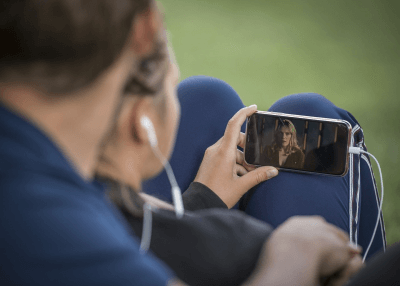Back/返回
Have you ever recommended to (or been recommended by) someone "read novels" or "watch movies" to learn a language?
You might not have realized this at the time, but those are both authentic language learning materials.
And the reason people recommend them is because they really work.
They not only provide a more realistic language context, but also makes language learning a lot more fun and goal-oriented. Just think, is it more fun to learn something to pass a language test next week, or to be able to that book you love in the original language it was written?
So, where can we find all the good stuff?
Before diving in, we can divide authentic language materials roughly into the following two categories:
Text

When we think of text, we primarily think of books or book excerpts, however, newspaper articles, magazine articles, blog posts (such as this one), and brochures are also some good examples of authentic text materials. Looking beyond materials with large chunks of text, restaurant menus, maps, store signs and advertisement posters are also great representations of where we might encounter text in everyday life.
Most of these materials you can either readily find online, or directly through your daily interactions. You can make newspaper clippings or article copies (be sure to follow abide to copyright laws or use copyright free material such as those distributed under a Creative Commons liscence), take a photo of the local restaurant menu on your night out, or just find images online of advertisement posters and local maps.
Some great online sources for finding articles include: NPR News, TIME, Tween Tribune, DOGOnews
And for images: Pinterest, Pexels, Google maps (interesting source of local menus and advertisement)
Audio and Video

These include the common ones such as movies, TV shows, TED talks, podcast, songs; and the less common ones, such as advertisement, radio broadcasts, automated phone messages, weather forecasts. This is by no means an exhaustive list, but simply provide an idea of where to start. And nowadays, with the rise of "short videos" (often under 30s) on social media platforms, such as Tiktok and Instagram, which is extremely popular especially in the younger generation (which includes many language learning students), these short videos could also be a great way to incorporate listening materials into the learning process.
Great resources for finding audio and video materials: Youtube, Tiktok, Instagram, iTunes, recorded message from calling customer service (say, if you want to upgrade your phone plan).
How to adapt authentic material
This section is mainly for language teaching, as most authentic materials tend to use language that is beyond the language ability of many learners. To adapt these materials would have the disadvantage of making them less "authentic", but it still give students the benefit of having a more realistic feel of where they may encounter similar language.
The best way to incorporate authentic material into the classroom is to either combine it with the topic you are currently teaching, or with specific activity types. Some examples from our tutors include:
Example topic adaptation:
- Business setting: can use CV, cover letter, email templated, report and PPT presentations for a set of lessons on business writing and speaking
- Food and ordering food: can use restaurant menu, cookbook recipe, cooking show video clip, restaurant reviews for a full session on food and food related topics
- Travelling: can use travel brochure, train and flight time tables, hotel booking websites, destination review websites, short videos of travel bloggers for an immersive session on some realistic scenarios during travel
Example activity adaptation:
- Vocabulary: e.g. fill in the blanks with given words, this works well if previous teaching content used the same set of materials
- Grammar: e.g. books, particularly fiction, are a great place to find all forms of the past tenses
- Song of the day: e.g. Play a song at the beginning of each class while students are getting ready, then play in again at the end with some gap fill or guess the word activity
Hopefully these gave you a taste of how authentic learning materials can be found and used. To learn more interesting language and language learning tidbits, stay tuned for more.